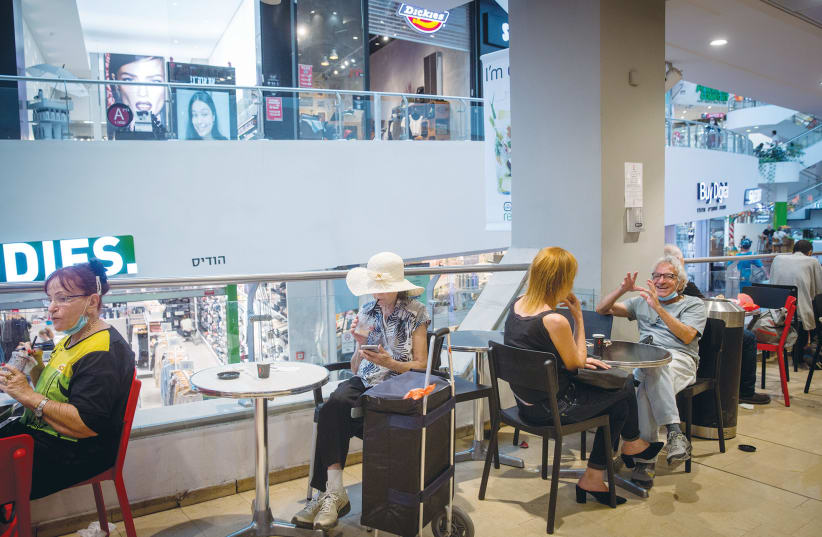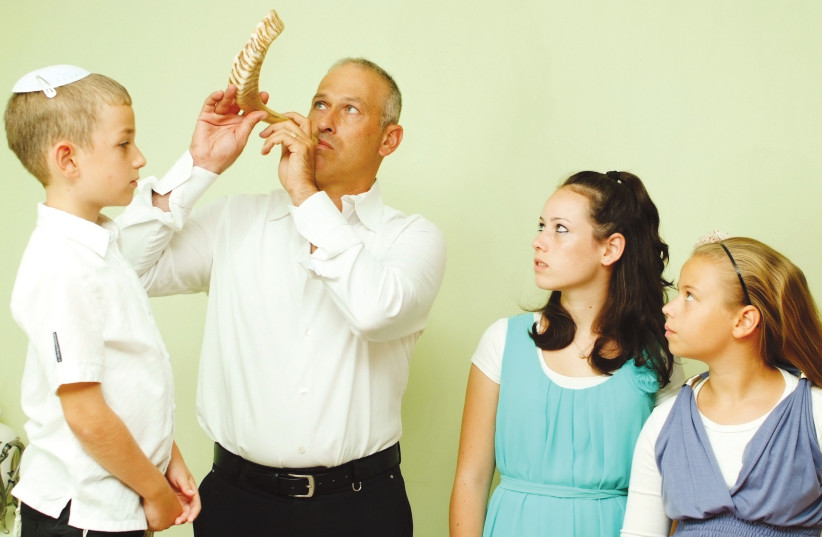Growing up as a Religious Zionist, I had been taught that Tel Aviv was, at most, the equivalent of Sodom; at best, it was Israel’s Hoboken. Jerusalem the heavenly and holy was the focus of my dreams and aspirations; Tel Aviv represented modern, secular Israel, the mundane and sweaty garden suburb of Jaffa founded in 1909.
How could the dreams of 60 families, led by Meir Dizengoff – a Russian revolutionary, a representative of Edmond de Rothschild, and Tel Aviv’s first mayor – compare with the glories of Jerusalem the Gold, the City of David, site of the Temple of Solomon, the link of the 3,000 years of tradition both in Israel and the Diaspora?
Yet, as we enter Elul – the final month of the Hebrew calendar and a time of deep introspection in anticipation of the High Holy Days – I recall that I discovered a source of religious inspiration in what is caricatured as “the land of bikinis and tattoo parlors” in Tel Aviv many years ago. While a visiting student at the hesder yeshiva in Gush Etzion in 1982, I found myself in the first modern Jewish city during the break from studies for Sukkot.
After getting a tan at the beach, I decided to look around the city and found myself only a few blocks from the sea in a residential neighborhood. And there was a holy site suddenly in front of me: the Trumpeldor Cemetery, also known as Tel Aviv’s Old Cemetery. I found my experience there as transcendent as my encounter with the Western Wall in Jerusalem.
Although I was struggling with Talmudic texts at the yeshiva in the Judean Hills during Elul, I associate my accidental pilgrimage weeks later with the last month of the Hebrew calendar. During Elul, it is the custom to visit our loved ones buried in the cemetery. The belief at the core of this tradition is zechuth avot – merit of the fathers (and all ancestors).
This concept, according to scholar Philip Birnbaum, “in Jewish theology, is expressive of the idea that individuals profit in their lifetime by the meritorious acts of their ancestors.” Those meritorious acts are embodied in the study of Torah and performing the ritual and ethical commands of the tradition.
Zionist luminaries, some who rebelled against aspects of Judaism, ensured the continuity of the Jewish people
But I would argue that there is a wider scope to acts of merit, which transcends the narrow confines of religion. In Tel Aviv’s Old Cemetery are buried Zionist luminaries, some who rebelled against aspects of Judaism, whose actions were meritorious in ensuring the continuity of the Jewish people and their thriving in the Jewish homeland.
The irony is that even in their rebellion they contributed to the flowering of Judaism and study of Torah. They devoted their life to the Jewish people and to the dream of ending exile. Buried in Tel Aviv are the modern heirs of the ancient prophets.
ONE HUNDRED years ago, Max Nordau and Ahad Ha’am were bitter rivals for the heart, soul and mind of the emerging Zionist movement. Nordau, a journalist and physician, ardently defended Theodor Herzl’s program of political Zionism and the establishment of a Jewish state in Israel. He advocated a “Jewry of Muscle,” a new breed of Jews who would celebrate the benefits of physical fitness and “become deep-chested, sturdy, sharp-eyed men.”
Ahad Ha’am – the pen name of Zionist philosopher and essayist Asher Zvi Ginsberg – rejected Herzl and Nordau’s political vision. His own vision of Zionism would be to make Israel a cultural and spiritual center for world Jewry, especially the masses of Jews living in Eastern Europe.
Rather than promote the fitness of the body, Ahad Ha’am instead urged the Zionist movement to focus on a revival of culture based on the tradition of the biblical prophets and the Hebrew language. “The deliverance of Israel will come at the hands of ‘prophets,’” Ahad Ha’am wrote in 1897, “not at the hands of ‘diplomats.’” In life, Nordau and Ahad Ha’am represented the great divide in the philosophy and practical program of the pre-state Zionist movement.
In death, however, the debate between these two giants is stilled. The great irony is that these men found their final resting place only a few yards from each other in Tel Aviv’s Old Cemetery. Nordau died in Paris in January 1923 but his remains were transferred to Tel Aviv three years later. Ahad Ha’am lived his last years as a resident of the city by the sea.
The placement of their graves is a symbol of the synthesis of their visions in the Land of Israel today. Israel has incorporated the vision of each of these luminaries into the fabric of Israeli society and politics. Nordau’s “Jewry of Muscle” is embodied in the reality of an Israel Defense Force and in the achievements of Jewish athletes in the Maccabiah games and the Olympics. Ahad Ha’am’s hopes for a cultural revival has found its realization in such academic institutions as the Hebrew University of Jerusalem, as well as the resurrection of Hebrew as the living, official language of the Jewish state.
Go to the graveyard, close your eyes for a moment, and you might hear the two men debating the future of the Jewish homeland. But such moments are fleeting – a visitor to the graveyard in Tel Aviv encounters a history that can only inspire feelings of awe. How were such men able to convert an idea, a dream, into a living reality? The Old Cemetery in Tel Aviv rivals the Western Wall in Jerusalem in its importance for the Jewish people and, yes, in its sanctity.
TODAY, TEL AVIV is Israel’s second largest city. More than a century ago, it was merely a vision in the minds of urban pioneers such as Meir Dizengoff. His grave in the Old Cemetery is a testament to the vitality and energy of the Zionist movement. The graves of the great Hebrew poets Haim Nahman Bialik and Saul Tchernikovsky are also testaments to the ability of Zionism and Hebrew culture to absorb opposing visions and ideas, and synthesize them.
While the central theme of Bialik’s poetry is the clash between traditional Judaism and Western secularism, Tchernikovsky wrote of the Hellenic ideal of beauty and the Canaanite cult of nature.
Israel’s ability to absorb different cultures, theologies and political ideologies is critical to the future of the Jewish state, as well as Jewish life in the Diaspora. We do not need to idealize Israel to realize that without a Jewish state in the post-Holocaust epoch, Jewish relevance and survival would be in jeopardy. With all of its crises and problems, Israel represents much more to most Jews than just a nation like any other nation.
No one should condemn Israelis for wanting a normal life free of war, free of tensions between the religious and the secular elements of society, and free of poverty. These are important and critical goals. Yet, Israel will never be a state like any other. Israel is the culmination and inheritor of both ancient Israel and 2,000 years of Jewish history in the Diaspora. Israel cannot escape its history; neither can Tel Aviv.
That is a tremendous burden to shoulder, one that should not be forced on Israel alone; it’s a responsibility shared by Jews throughout the world. Aliyah of Jews from the Diaspora to Israel would be the ultimate sharing of that burden. As time passes, Israel’s role in forming global Jewish identity is not diminishing but steadily increasing.Zionism is both a continuation of Jewish tradition and a radical break with the past. The importance of the modern State of Israel cannot be underestimated. Not only has Israel inspired Jews to surmount the greatest trauma in Jewish history. Zionism resurrected the living by infusing new life into a declining civilization. If the dead in Tel Aviv’s Old Cemetery had never lived, thought and acted, Judaism and Jewish life would be utterly impoverished and irrelevant.
Max Nordau and Ahad Ha’am were holy rebels who led a movement that rivals the Sinai revelation in its importance to Jews. The Western Wall may be central to historical and religious Jewish consciousness. But the reality in this world is that we are also the inheritors of Nordau, Ahad Ha’am, Bialik, Tchernikovsky and Dizengoff. To ignore their contribution to the destiny of the Jewish people is to reject the true message of Zionism and Jewish history.
The writer is the rabbi of Congregation Anshei Sholom in West Palm Beach, Florida.

